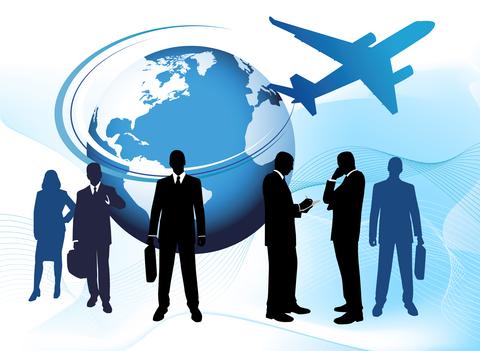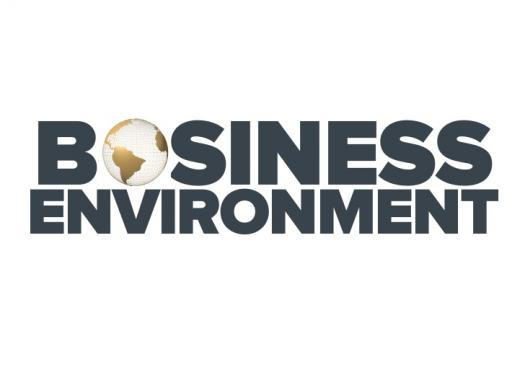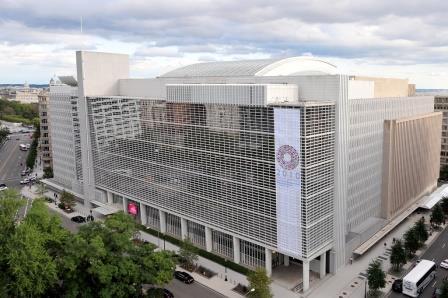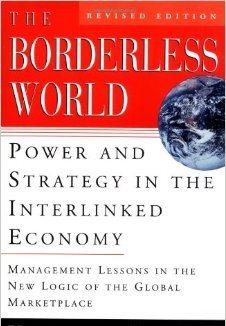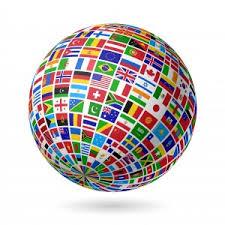First Iat On International Business :: Third Semester MBA @ Macfast, Thiruvalla, Kerala, India - 689101

This quiz for MBA students at MACFAST, Thiruvalla, covers key aspects of international business. It assesses knowledge on global market entry strategies, economic frameworks like PESTEL, and influential literature in the field, preparing students for global business challenges.
- 1.
Why do companies go global?
- A.
Growth Strategy
- B.
Profit Advantage
- C.
Limitations in domestic market
- D.
Economies of scale
- E.
All of the above
Correct Answer
E. All of the aboveExplanation
Companies go global for a variety of reasons. One reason is to pursue a growth strategy. By expanding into new markets, companies can increase their customer base and revenue. Going global also provides companies with a profit advantage. They can tap into new markets that may have higher profit margins or lower competition. Additionally, companies may choose to go global due to limitations in their domestic market. If the domestic market is saturated or declining, going global allows companies to find new opportunities for growth. Finally, going global can provide economies of scale. By operating on a larger scale, companies can reduce costs and increase efficiency.Rate this question:
-
- 2.
What does PESTEL stand for?
- A.
Political, Economical, Social, Technical, Ecological, Legal
- B.
Political, Economical, Social, Technical, Environmental, Legal
- C.
Political, Economical, Social, Technological, Environmental, Legal
- D.
Psychological, Economical, Social, Technical, Ecological, Legal
- E.
Psychological, Environmental, Social, Technical, Ecological, Legal
Correct Answer
C. Political, Economical, Social, Technological, Environmental, LegalExplanation
The correct answer is "Political, Economical, Social, Technological, Environmental, Legal." PESTEL is a framework used in strategic analysis to assess the external macro-environmental factors that can impact an organization. It helps to identify and analyze the political, economic, social, technological, environmental, and legal factors that may affect the organization's operations and decision-making process. This analysis allows organizations to understand the external factors that may present opportunities or threats to their business and develop strategies accordingly.Rate this question:
-
- 3.
IBRD is the original name for?
- A.
IMF
- B.
World Bank
- C.
WTO
- D.
ITC
- E.
Indian Bank for Rural Development
Correct Answer
B. World BankExplanation
IBRD, which stands for International Bank for Reconstruction and Development, is the original name for the World Bank. The World Bank was established in 1944 as a specialized agency of the United Nations with the goal of providing financial and technical assistance to developing countries for development projects. Over time, the World Bank has expanded its focus to include poverty reduction and sustainable development. The IMF (International Monetary Fund) is a separate international organization that primarily focuses on promoting global monetary cooperation and financial stability. WTO (World Trade Organization) is another international organization that deals with global trade rules, and ITC (International Trade Centre) is a joint agency of the WTO and the United Nations that supports the development of small and medium-sized enterprises in developing countries. The Indian Bank for Rural Development is a separate entity that focuses on rural development within India.Rate this question:
-
- 4.
Which of the following is not an entry strategy under the category of "strategic alliances"?
- A.
Marketing Tie-up
- B.
Take Over
- C.
Wholly Owned Subsidiary
- D.
Mergers & Acquisition
- E.
Resource sharing arrangement
Correct Answer
C. Wholly Owned SubsidiaryExplanation
A wholly owned subsidiary is not considered an entry strategy under the category of strategic alliances because it involves a company establishing a new subsidiary in a foreign market and fully owning and controlling it. This is different from strategic alliances, which typically involve two or more companies collaborating and sharing resources, knowledge, and risks to enter a foreign market. Wholly owned subsidiaries are often used when a company wants complete control over its operations in a foreign market and is willing to bear all the risks and costs associated with it.Rate this question:
-
- 5.
Who is the author of the book "The Borderless World"?
- A.
Adam Smith
- B.
Kenichi Ohmae
- C.
Amartya Sen
- D.
Thomas Friedman
- E.
Michael Porter
Correct Answer
B. Kenichi OhmaeExplanation
Kenichi Ohmae is the author of the book "The Borderless World."Rate this question:
-
- 6.
Which of the following is a similarity between international and domestic marketing?
- A.
Identical political factors
- B.
Same financial systems
- C.
Similar market characteristics
- D.
Equal risk factors
- E.
Aim at satisfying the needs of customers
Correct Answer
E. Aim at satisfying the needs of customersExplanation
The correct answer is "Aim at satisfying the needs of customers." This is a similarity between international and domestic marketing because both types of marketing involve identifying and fulfilling the needs and wants of customers. Whether it is a domestic market or an international market, the ultimate goal of marketing is to satisfy customers and provide them with products or services that meet their needs and preferences. This similarity highlights the customer-centric approach that is essential in both international and domestic marketing strategies.Rate this question:
-
- 7.
Some of the benefits that a company enjoys after acquiring globalisation are:
- A.
Increased economy of scale of its products
- B.
Provides a good position in the global market
- C.
Possibility of combining product development, marketing and purchasing activities in different countries
- D.
Standardisation of operations & processes
- E.
All of the above
Correct Answer
E. All of the aboveExplanation
Globalization offers several benefits to companies. Firstly, it allows them to achieve increased economies of scale for their products. This means that by operating on a global scale, companies can produce and sell larger quantities of their products, leading to lower production costs and higher profits. Secondly, globalization provides companies with a good position in the global market. By expanding their operations internationally, companies can tap into new markets and reach a larger customer base. Thirdly, globalization enables companies to combine product development, marketing, and purchasing activities in different countries. This allows them to take advantage of different resources, skills, and market opportunities available in various regions. Lastly, globalization promotes standardization of operations and processes, which can lead to greater efficiency, cost savings, and improved quality control. Therefore, all of the above benefits are enjoyed by companies after acquiring globalization.Rate this question:
-
- 8.
The most important social factors that affect the international business are:
- A.
Language of the country
- B.
Culture of the country
- C.
Environment & climate of the country
- D.
Ethnic factors of the country
- E.
All of the above
Correct Answer
E. All of the aboveExplanation
The correct answer is "All of the above" because language, culture, environment and climate, and ethnic factors all play significant roles in influencing international business. Language barriers can affect communication and negotiations, cultural differences can impact business practices and customs, the environment and climate can affect industries and supply chains, and ethnic factors can influence consumer preferences and market demands. Therefore, all these social factors are important considerations for businesses operating internationally.Rate this question:
-
- 9.
Which of the following is not a Driver of Globalisation?
- A.
Increasing gap between the rich and the poor
- B.
Falling barriers to trade and investment
- C.
Emergence of regional blocs
- D.
Emergence of new markets
- E.
Technological innovation
Correct Answer
A. Increasing gap between the rich and the poorExplanation
The increasing gap between the rich and the poor is not a driver of globalization. Globalization refers to the increasing interconnectedness and integration of economies, cultures, and societies worldwide. The other options listed - falling barriers to trade and investment, emergence of regional blocs, emergence of new markets, and technological innovation - are all factors that contribute to globalization by promoting the flow of goods, services, capital, and ideas across borders. However, the increasing gap between the rich and the poor is a consequence of globalization rather than a driver.Rate this question:
-
- 10.
The main function of World Bank is:
- A.
To provide income for the people who are below the poverty line (BPL)
- B.
To provide long-term capital assistance to its member countries for their reconstruction & development
- C.
To supply food materials for underdeveloped countries
- D.
To encourage export of essential goods to developing and underdeveloped member countries
- E.
To provide financial assistance to the various non-governmental organisations (NGO) for their projects in eradicating poverty, hunger and unemployment
Correct Answer
B. To provide long-term capital assistance to its member countries for their reconstruction & developmentExplanation
The main function of the World Bank is to provide long-term capital assistance to its member countries for their reconstruction and development. This means that the World Bank provides financial support and resources to help countries improve their infrastructure, promote economic growth, and reduce poverty. By providing this assistance, the World Bank aims to help member countries overcome challenges and achieve sustainable development.Rate this question:
-
- 11.
Which of the following is not a key investment objective of a multinational country?
- A.
Bring political and economic stability in the host country
- B.
Ensure that the operations of enterprises are in harmony with government policies
- C.
Improve foreign investment climate
- D.
Strengthen the basis of mutual confidence between enterprises and the societies in which they operate
- E.
Enhance contribution of enterprise to sustainable development
Correct Answer
A. Bring political and economic stability in the host countryExplanation
The investment objective of a multinational country is not to bring political and economic stability in the host country. Instead, the key investment objectives include ensuring that the operations of enterprises are in harmony with government policies, improving the foreign investment climate, strengthening the basis of mutual confidence between enterprises and the societies in which they operate, and enhancing the contribution of enterprise to sustainable development.Rate this question:
-
- 12.
Which of the following is a type of non-tariff barrier?
- A.
Import Duties
- B.
Environmental protection laws
- C.
Ad valorem tariffs
- D.
Protective taxation
- E.
Anti-dumping duties
Correct Answer
B. Environmental protection lawsExplanation
Environmental protection laws are a type of non-tariff barrier because they restrict or regulate the importation of goods based on their environmental impact. These laws aim to protect the environment and ensure that imported goods meet certain environmental standards. Import duties, ad valorem tariffs, protective taxation, and anti-dumping duties, on the other hand, are types of tariff barriers that involve the imposition of taxes or duties on imported goods to protect domestic industries or regulate trade.Rate this question:
-
- 13.
Porter’s Diamond explains
- A.
Why does a firm achieve international success in a particular industry?
- B.
Why does a firm achieve international success in a particular country?
- C.
Why does a nation achieve international success in the global economy?
- D.
Why does a nation achieve international success in a particular industry?
- E.
Why does a nation achieve international success in financial markets?
Correct Answer
D. Why does a nation achieve international success in a particular industry?Explanation
Porter's Diamond explains why a nation achieves international success in a particular industry. The framework suggests that the competitiveness of a nation in a specific industry is influenced by four factors: factor conditions, demand conditions, related and supporting industries, and firm strategy, structure, and rivalry. Factor conditions refer to the availability and quality of resources, such as skilled labor and infrastructure. Demand conditions reflect the size and sophistication of the domestic market. Related and supporting industries refer to the presence of suppliers, buyers, and other related industries that contribute to competitiveness. Firm strategy, structure, and rivalry refer to the management and competition within the industry. These four factors work together to shape a nation's competitive advantage in a specific industry.Rate this question:
-
- 14.
Whose theory is “Fortune at the Bottom of the Pyramid”?
- A.
Philip Kotler
- B.
Jason Statham
- C.
Khushwant Singh
- D.
Pythagoras
- E.
C. K. Prahalad
Correct Answer
E. C. K. PrahaladExplanation
C. K. Prahalad is the author of the theory "Fortune at the Bottom of the Pyramid". This theory suggests that there is a vast untapped market at the bottom of the economic pyramid consisting of low-income individuals, and businesses can find profitable opportunities by serving this segment. Philip Kotler is a well-known marketing expert, Jason Statham is an actor, Khushwant Singh is an Indian author, and Pythagoras is a mathematician, none of whom are associated with this theory.Rate this question:
-
- 15.
Which of the following is not an impact of Tariff Barriers in International Trade?
- A.
Impact on income and employment
- B.
BOP Effect
- C.
Consumption Impact
- D.
Administration Effect
- E.
Protection Impact
Correct Answer
D. Administration EffectExplanation
Tariff barriers in international trade have various impacts, such as impacting income and employment, the balance of payments (BOP), consumption, and protection. However, the administration effect is not one of these impacts. The administration effect refers to the costs and complexities associated with implementing and enforcing tariff barriers, including administrative burdens and costs for both the importing and exporting countries. While it is a consequence of tariff barriers, it is not considered one of the impacts of tariff barriers on international trade.Rate this question:
-
- 16.
The Uruguay Round of negotiations under GATT resulted in the formation of
- A.
International Monetary Fund
- B.
International Court for Dispute Settlement
- C.
International Trade Organisation
- D.
World Trade Organisation
- E.
World Bank
Correct Answer
D. World Trade OrganisationExplanation
The Uruguay Round of negotiations under GATT resulted in the formation of the World Trade Organisation. This organization was established to replace GATT and serve as a global forum for negotiating trade agreements, resolving trade disputes, and monitoring the implementation of trade policies. The creation of the WTO aimed to provide a more comprehensive and effective framework for international trade rules and regulations, promoting a more open and transparent global trading system.Rate this question:
-
- 17.
Which of the following roles are played by WTO?
- A.
Tribunal
- B.
Conductor
- C.
Trainer
- D.
Motivator
- E.
All of the above
Correct Answer
E. All of the aboveExplanation
The correct answer is "All of the above" because the World Trade Organization (WTO) serves as a tribunal by providing a platform for resolving trade disputes between member countries. It also acts as a conductor by setting and enforcing rules for international trade. Additionally, the WTO plays a role as a trainer by providing technical assistance and capacity-building programs to help member countries understand and comply with trade rules. Lastly, it acts as a motivator by promoting and facilitating trade liberalization and economic growth among its members.Rate this question:
-
- 18.
Which of the following country is not a member of ASEAN treaty?
- A.
Sri Lanka
- B.
Cambodia
- C.
Singapore
- D.
Brunei
- E.
Laos
Correct Answer
A. Sri LankaExplanation
Sri Lanka is not a member of the ASEAN treaty. ASEAN, which stands for the Association of Southeast Asian Nations, is a regional organization comprising ten member countries in Southeast Asia. Sri Lanka is not geographically located in Southeast Asia, which is the primary reason for its non-membership in the ASEAN treaty.Rate this question:
-
- 19.
Which of the following is an example of direct export mode?
- A.
Export Commission House
- B.
Export Management Company
- C.
Foreign Sales Branch
- D.
Piggyback Marketing
- E.
Export Merchants
Correct Answer
C. Foreign Sales BranchExplanation
A foreign sales branch is an example of direct export mode because it involves establishing a branch or subsidiary in a foreign country to directly sell products or services to customers in that market. This allows for greater control and presence in the foreign market, as well as the ability to tailor products or services to local preferences. Export commission house, export management company, piggyback marketing, and export merchants are all examples of indirect export modes, where the company relies on intermediaries or third parties to handle the export process.Rate this question:
-
- 20.
Raymond Vernon’s Product Life Cycle theory of international trade says that
- A.
Patterns of trade are determined by differences in factor endowments - not productivity.
- B.
Labor is not the only Factor of production. We need to account for land, capital, and technology.
- C.
One country is capable to produce more of a product with the same amount of input than another country.
- D.
As products mature, both location of sales and optimal production changes
- E.
Promoting free trade is generally in the best interests of the home-country, although not always in the best interests of the firm.
Correct Answer
D. As products mature, both location of sales and optimal production changesExplanation
According to Raymond Vernon's Product Life Cycle theory, as products mature, the location of sales and optimal production changes. This means that as a product becomes more established and reaches its maturity stage, the demand for it may shift to different countries or regions. Additionally, the most efficient location for production may also change as the product evolves. This theory suggests that companies should be aware of these changes and adapt their strategies accordingly to remain competitive in the global market.Rate this question:
-
Quiz Review Timeline +
Our quizzes are rigorously reviewed, monitored and continuously updated by our expert board to maintain accuracy, relevance, and timeliness.
-
Current Version
-
Mar 21, 2023Quiz Edited by
ProProfs Editorial Team -
Aug 18, 2015Quiz Created by
Mba2015ib
- Accounting Quizzes
- Advertising Quizzes
- Agriculture Quizzes
- Automotive Quizzes
- Brand Quizzes
- Business Accounting Quizzes
- Business Analyst Quizzes
- Business Development Quizzes
- Business Environment Quizzes
- Business Etiquette Quizzes
- Business Finance Quizzes
- Business Math Quizzes
- Business Organization Quizzes
- Business Plan Quizzes
- Business Process Quizzes
- Business Study Quizzes
- Business Technology Quizzes
- CEO Quizzes
- Collaboration Quizzes
- Company Quizzes
- Construction Quizzes
- Consumer Quizzes
- CSR Quizzes
- Customer Quizzes
- Customer Service Quizzes
- Development Quizzes
- Ecommerce Quizzes
- Employment Quizzes
- Entrepreneurship Quizzes
- Finance Quizzes
- Hospitality Quizzes
- Human Resources Quizzes
- Industry Quizzes
- International Business Quizzes
- Introduction To Business Quizzes
- Investment Quizzes
- Logistics Quizzes
- Management Quizzes
- Manufacturing Quizzes
- Marketing Quizzes
- Material Quizzes
- Media Quizzes
- Office Quizzes
- Organization Quizzes
- Principles Of Business Quizzes
- Printing Quizzes
- Product Quizzes
- Publishing Quizzes
- Real Estate Quizzes
- Retail Quizzes
- Sales Quizzes
- SAP Business One Quizzes
- Small Business Quizzes
- Source Quizzes
- Supply Quizzes
- Survey Quizzes
- Telecommunication Quizzes
- Trade Quizzes
- Training Quizzes
- Transportation Quizzes
- Warehouse Quizzes
- Welding Quizzes



